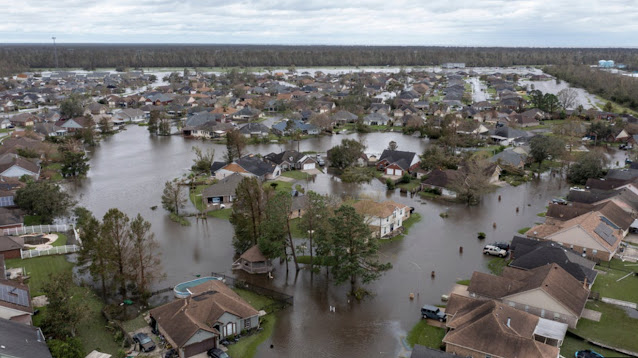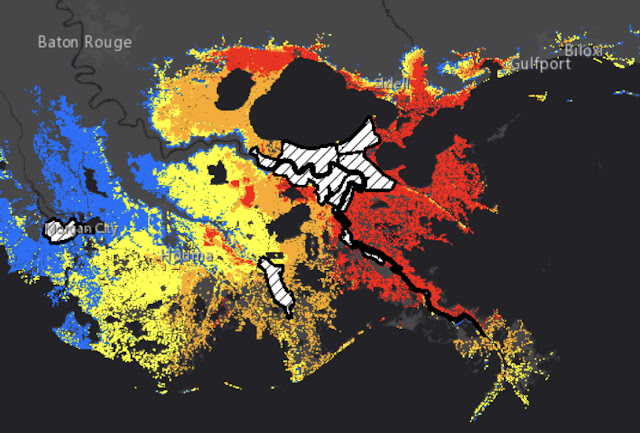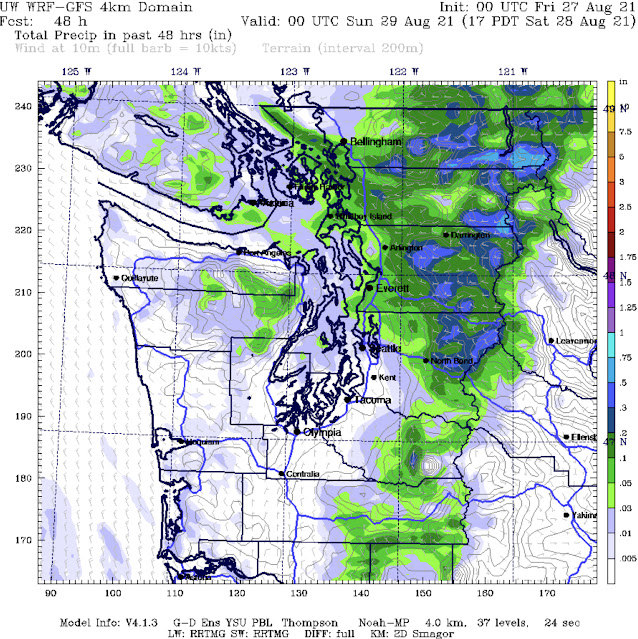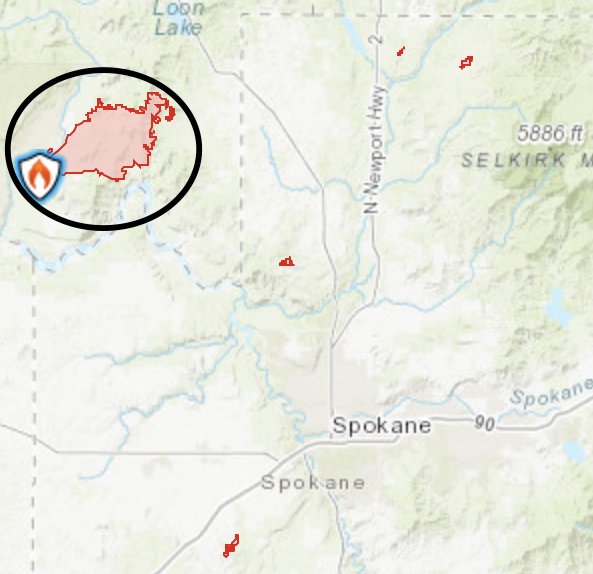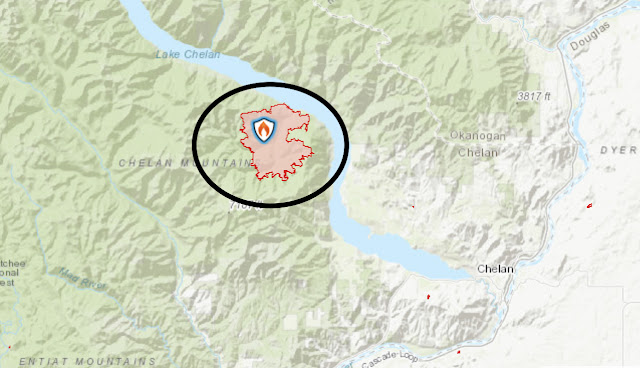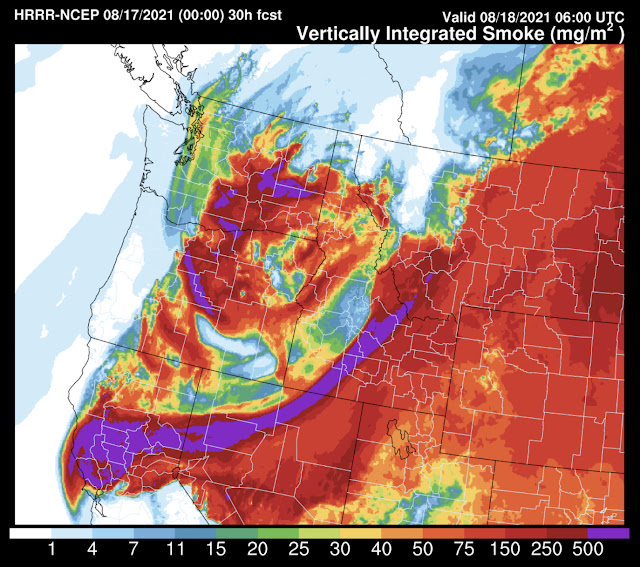The worst smoke event of the year so far is currently impacting Western Washington. Smoke is being blown into the area from fires around the West, including from Eastern Washington and BC. Below is Thursday night’s satellite image.
Smoke is evident over most of the Northwest, along with some scattered clouds. The smoke kept temperatures a couple degrees below some forecasts, but overall the smoke-related temperatures were predicted well. Below are Thursday’s highs in the Puget Sound area.Most every location was in the low-mid 90s, with a few in the upper 90s in the foothills and near Olympia. Temperatures were slightly cooler, in the 80s, near the water.Offshore flow had a major impact on temperatures downwind of the Fraser River Valley. Bellingham set an all time record of 100 degrees today due to a warming offshore wind. (This wind also brought smoke…so it was 100 and smoky, which is downright disgusting). Below are temperatures in the Bellingham area.
The airport hit 100, setting the new record, and other stations away from the water were in the upper 90s to low 100s.Back in the Puget Sound area, highs on Friday are expected to be in the mid to upper 90s, potentially reaching the low 100s from Olympia southward and in the foothills. Smoke might shave a couple degrees off these temperatures, but it will still be dangerously hot.
Additionally, smoke aloft and near the surface will keep temperatures warm overnight, likely in the mid 60s to low 70s on Thursday and Friday nights.
An Excessive Heat Warning (below) remains in effect until 7 PM Saturday.
Make sure to take precautions in the heat and stay in a cool place.The Smoke Forecast:
One thing to note…there will be smoke aloft, dense at times, through at least Saturday. Forecasts for smoke aloft won’t be shown in this blog.
Below is the surface smoke situation as of 7 PM Thursday.
Moderate concentrations of smoke are present, bringing air quality to the “unhealthy for sensitive groups” category. Notice the dense smoke plumes moving south from British Columbia. Those plumes will be impacting Western Washington on Friday.We’ll fast forward to 7 AM Friday. A temporary break from surface smoke for Western Washington. Dense smoke is present for Eastern Washington and is moving into parts of Western Washington, mainly in the Northwest Interior, San Juans, and the Strait.
Surface smoke will continue to move south through the day, and by 3 PM Friday (below), smoke has thickened in Western Washington.
Unfortunately, the worst is still ahead. Surface smoke concentrations will peak in Western Washington around 7 PM Friday. Air quality will be at its worst, and you’ll probably smell the smoke. Below is the forecast at 7 PM.
Thick concentrations of surface smoke are present for almost all of Western Washington, except closer to the coast. Near surface smoke will gradually clear out overnight, and much-improved conditions will prevail by Saturday morning. Areas in the North Sound and Cascade foothills will be a bit slower to improve.
Now for air quality…the Puget Sound & Olympic Clean Air Agencies have issued an Air Quality Alert, in effect until 7 PM Saturday. It is shown below.
The alert gives good recommendations for who should be avoiding outside air during this smoke situation. Below is the AQI forecast for Seattle, along with the reading as of 7:45 PM Thursday.
AQI will remain elevated through Saturday, with the worst conditions lasting through Friday. Just for a reminder, below are the AQI categories from the EPA, which shows who needs to take precautions in each category.
A frequently updated and accurate air quality map can be found below. Just click the link and pan to your location on the map, and you can see air quality readings from your local area. You can also download the “EPA AirNow” app on an iOS or Android device to see accurate air quality information.
https://fire.airnow.gov/
Stay safe & cool!
